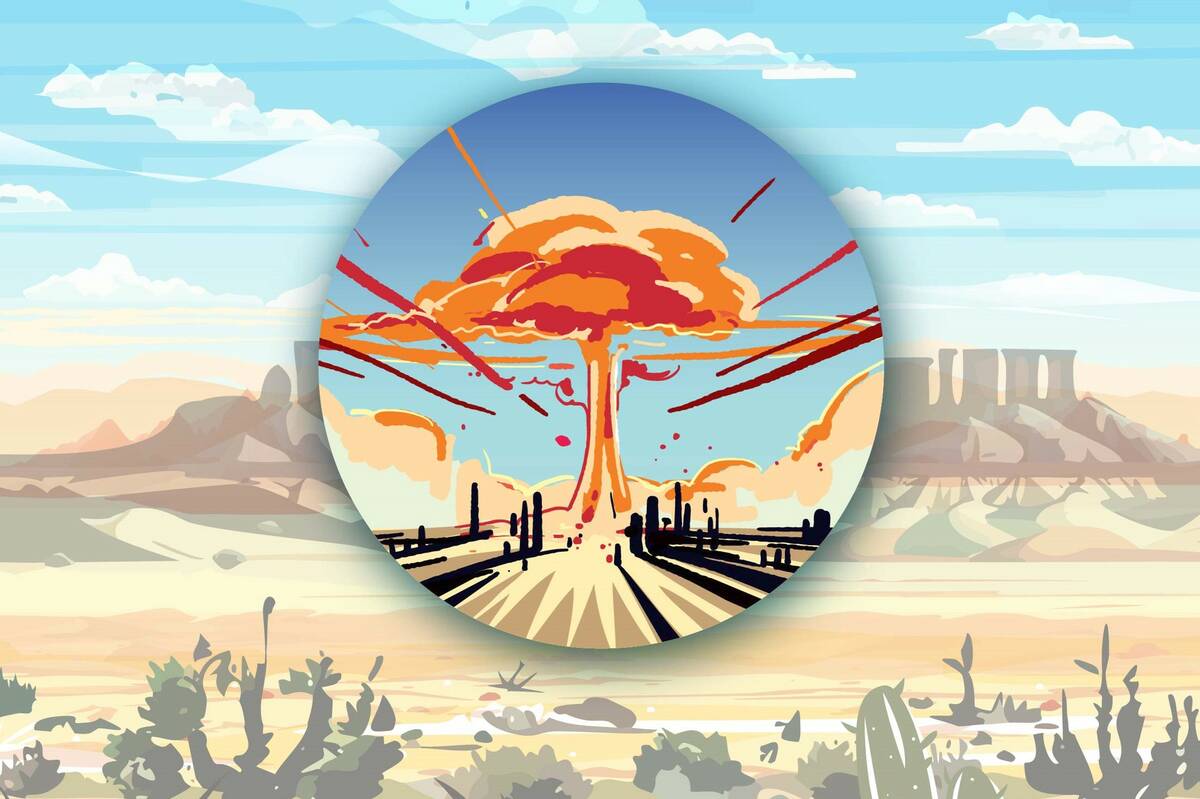The nucleus: Nevada plays crucial role in U.S. nuclear programs
From the days when Las Vegas residents would sit on roofs to watch mushroom clouds bloom in the distance to today’s more quiet but ever-present maintenance of the U.S. nuclear stockpile, Nevada has always had a front-row seat to the nation’s nuclear programs.
As U.S. rivals strategize how to use their nuclear power for diplomatic leverage or grow their own nuclear arsenals, Nevada will continue to play a leading role in both the national and world stages as a potential nuclear arms race evolves.
The United States is on the verge of experiencing two simultaneous arms races, one with Russia and another with China, according to Jeffrey Lewis, a professor at the Middlebury Institute of International Studies’ James Martin Center for Nonproliferation Studies in Monterey, California.
“It’s a particularly frightening and dangerous moment, for sure,” he said, but he doesn’t want to be “too alarmed.”
In October, Russia took a step back from the nuclear test ban treaty to position itself alongside other nuclear powers such as the U.S. and China and as a political strategy to help in the Ukraine war, experts say.
For the first time since the Cold War, the number of nuclear weapons in the world is increasing due to China’s efforts to expand its arsenal and catch up with the other superpowers, more than doubling its stockpile in the last three years.
With a war raging between Russia — a nuclear armed power, and Ukraine — a country supported by the nuclear-armed alliance NATO, the risk of nuclear war is naturally higher, Lewis said.
Russia and the U.S. have expressed continued commitments to not resume nuclear testing, and China and the U.S. this month are engaging in nuclear arms control discussions.
The U.S. has also made efforts to demonstrate transparency regarding its nuclear reserves and the experiments it is conducting in Nevada, which “plays a key role in the certification of our nation’s nuclear stockpile and detection of nuclear explosions around the world,” Nevada Democratic Sen. Jacky Rosen said in a statement to the Las Vegas Review-Journal.
Detecting nuclear tests
Located 65 miles northwest of Las Vegas, the Nevada National Security Site — formerly called the Nevada Test Site — served as the location for hundreds of atmospheric and underground nuclear explosion tests during the Cold War.
Since those tests came to an end in 1992 when President George H.W. Bush signed legislation imposing a moratorium on nuclear testing, the Nevada National Security Site’s primary mission has been to support nuclear nonproliferation, or preventing an increase in nuclear weapons.
The 1,360-square-mile site employs approximately 3,500 people in Nevada and provides a $1 billion-plus economic impact to the state. It oversees the country’s Stockpile Stewardship Program in which scientists conduct experiments to verify the reliability of the U.S. nuclear stockpile without explosive nuclear testing. They learn how the weapons age over time and refurbish weapons and components as necessary.
Nevada also plays a key part in developing the country’s monitoring capabilities to detect any nuclear explosive tests, including those conducted in an evasive or clandestine way, according to a National Nuclear Security Administration spokesperson.
Developing those capabilities will help the U.S. know if another country is secretly testing nuclear weapons.
On Oct. 18, the National Nuclear Security Administration (NNSA) conducted an underground chemical explosion to improve those capabilities at Area 12 of the Nevada National Security Site in Nye County. The experiment used the equivalent of 16 tons of TNT to produce underground seismic waves that could be detected at different distances, a spokesperson said.
To compare, the first nuclear bomb tested in New Mexico in 1945 released an equivalent of 20,000 tons of TNT, according to the Bulletin of the Atomic Scientists.
The NNSA conducts similar experiments routinely at the site, including 10 that ranged from 0.1 tons to 50 tons between 2011 to 2019, a spokesperson said. Several more tests are scheduled over the next decade.
Two subcritical experiments are planned for 2024 at the Nevada National Security Site, according to Jill Hruby, administrator of the National Nuclear Security Administration, who spoke at a recent 2023 Comprehensive Test Ban Treaty conference.
Since it halted nuclear testing 30 years ago, the U.S. has conducted 33 subcritical experiments at the site. Subcritical experiments allow scientists to ensure the country’s nuclear stockpile meets performance requirements without having to create a nuclear chain reaction.
“NNSA is committed to this long-term vision of advancing nuclear detonation detection capabilities and of developing the technical workforce in Nevada who support this important national security mission,” an administration spokesperson said in a statement to the Review-Journal.
Push for transparency
At the beginning of the year, the Bulletin of the Atomic Scientists set its famous Doomsday Clock to 90 seconds to midnight — the closest ever to global catastrophe — citing the war in Ukraine.
Russia’s deratification in early November of the Comprehensive Nuclear Test Ban Treaty, a 1996 agreement signed by 187 nations banning all nuclear explosions, added to already mounting concerns that Russia could resume nuclear testing.
Deputy Foreign Minister Sergei Ryabkov maintained in October that Russia will not resume nuclear testing unless the U.S. does. Rather, Ryabkov said the deratification put Russia into line with the United States and China, who had signed the treaty but never ratified it.
John Erath, senior policy director of the Center for Arms Control and Non-Proliferation, said Russia’s decision is a strategy to push Western countries’ influence out of the war in Ukraine. Russian leaders understand the U.S. is nervous about the possibility of the use of nuclear weapons, and they are trying to play on those fears, Erath said.
“What their intentions are, what they’re planning, is shrouded in mystery for this reason,” he said. “They want to be as scary as possible.”
Seismic stations set up worldwide monitor for seismic activity and shockwaves in the earth with a degree that they can tell that something is a very large explosion, Erath said, “so if somebody did a nuclear test … we would know about it.”
The U.S. Department of Energy has promoted transparency, including welcoming international visits to the Nevada National Security Site, in hopes that Russia and China will respond with their own transparency measures, Lewis said.
“The U.S. is committed to our nuclear testing moratorium and we have no issues proving it, but any potential transparency measures with Russia and China have to be met with reciprocity,” an NNSA spokesperson said in a statement to the Review-Journal. “There are no ongoing discussions with Russia or China on transparency visits and no invitations have been made.”
Political future with nuclear weapons?
Resuming nuclear testing remains an unpopular stance in the United States — as the move could trigger other countries to follow suit — but Lewis worries a future president could head in that direction.
The Trump Administration, for instance, had discussions in 2020 about whether to conduct a nuclear test explosion. Any resumption of nuclear testing would presumably happen in Nevada, Lewis said. Residents of the state should be worried that a future president would resume nuclear testing, he said.
Nevada’s long history of nuclear testing did not come without ramifications. The nuclear fallout continues to have consequences today with residents downwind of the tests and veterans who worked at the test sites experiencing high rates of cancer.
It is worth recommitting to the nuclear testing ban to show the U.S. is doing the right thing, Erath said.
“I think we should be drawing that distinction very clearly, between who is working to make the world a safer place and who is doing the opposite,” he said.
Contact Jessica Hill at jehill@reviewjournal.com. Follow @jess_hillyeah on X.


















